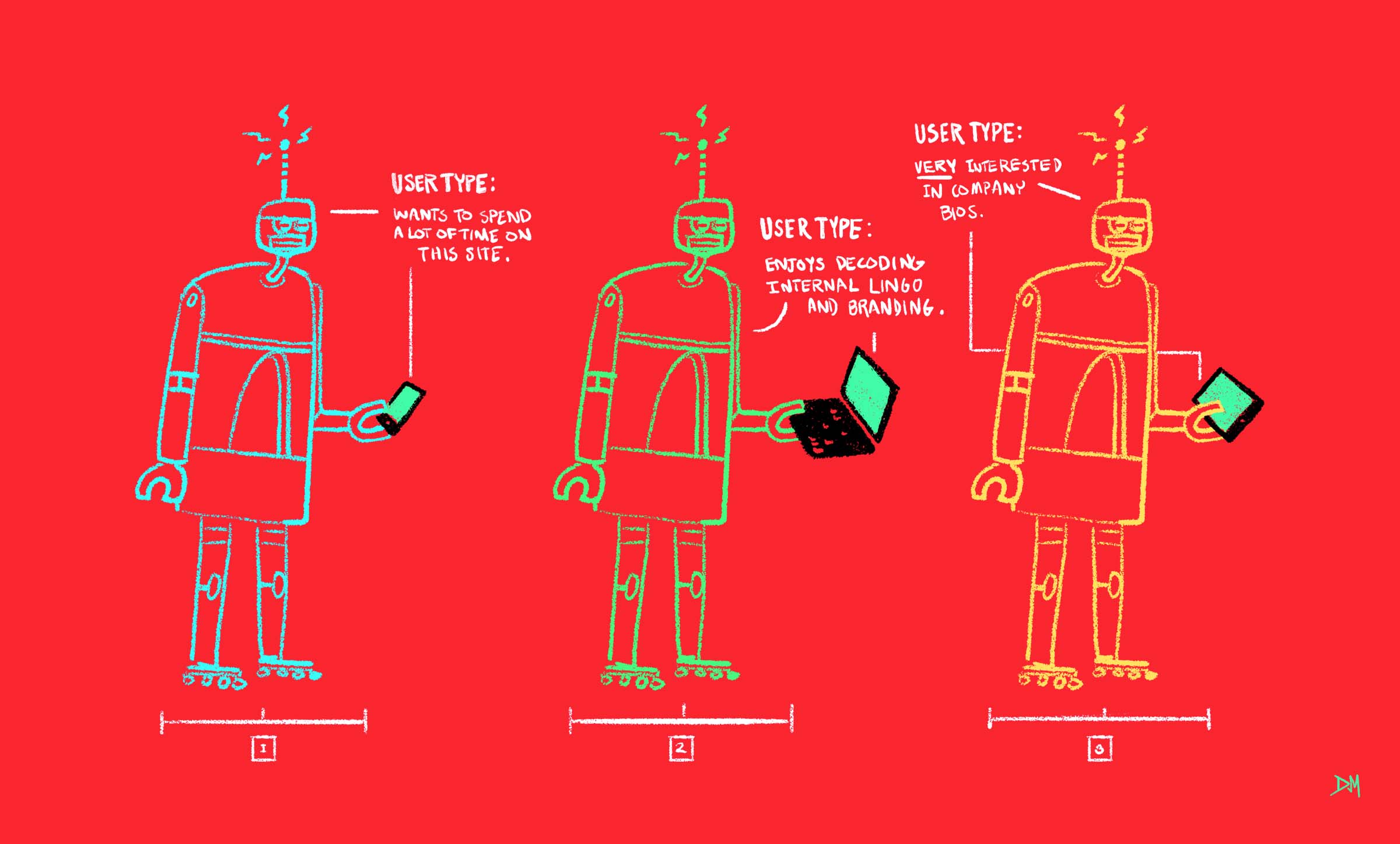AI Can't Solve Your Big UX Problems
4 min read
AI Can’t Fix Your Bad User Experience
From self-driving cars to voice assistants, artificial intelligence has added a great deal of everyday convenience to our lives. With easy access to large language models (LLMs) like ChatGPT and other generative AI, we now have the alluring possibility of offloading the hard, time-intensive parts of our work.
An entire industry has grown around selling AI-powered “copilots” for generating everything from vital user research and app copy to design color palettes and outright code (note: the latter is currently under litigation). But no matter how powerful the algorithm, AI can’t do the important, strategic work of designing or improving your digital products.
Here’s why relying solely on the robots means certain doom for your software, sites, and apps.
1. AI isn’t Aligned with Users
A carefully worded prompt can (technically) produce many of the artifacts required when creating a digital product: user personas, copy, design, code. But these efforts are worthless if they aren’t grounded in real users and their needs.
Personas (archetypal representations of your main user groups) don’t work when they’re not informed by users, and certainly not when they’re
based on a faceless amalgamation. It’s also not enough for copy to make linguistic sense; it must be grounded in a content strategy that aligns your business goals with user needs. Design and code should also be created with human behavior and
limitations in mind, not to mention accessibility and legal compliance. When AI takes a stab, the results are likely to be an uncanny mess.

2. Users are Unpredictable
ChatGPT and its kind are like autocomplete on steroids. They're trained to seek patterns, supply answers—and deliver them with supreme confidence. AI of this sort behaves this way even when there is no answer, even if it has to make things up. For example: when asked about AI’s influence on medieval art, it’ll kindly invent references to nonexistent articles.
However, when it comes to digital products, embracing ignorance is a virtue. Users aren’t monolithic. They’re a diverse, unpredictable bunch who are unlikely to conform to standard expectations. To be successful, you must understand your users’ specific needs, tasks, and preferences. You can’t pretend to know all the answers, or you’ll end up designing something that works for exactly no one.
AI, however, is designed to find the lowest common denominator. It can only make blanket assumptions. Its very nature makes it unsuitable for anticipating individual needs and addressing edge cases.
3. Users Don’t Trust AI
We’re all familiar with Skynet and HAL-9000. Our popular media reflects our long-held anxieties about technology outpacing our ability to control it. AI has also proven to be somewhat off-putting to interact with, as it’s often unreliable, nonsensical, and deeply biased. Yet long-term success starts with user trust. Even if automation can significantly speed up a process, it may not make sense to implement an AI-powered solution if it risks alienating users.
Think about how frustrating automatic phone systems are, how we’ve all learned to keep pressing “0” to get to a human. In this same way, chatbots can sometimes be more of a barrier to entry than a useful presence when we have more complex needs than it can address. It takes a great deal of vetting to ensure responses are helpful, appropriate, and accurate. It’s also susceptible to misuse and prompt injection attacks, as in the case of the Chevy support bot that was tricked into thinking it was a Tesla dealer. Oh, and the technology is often inaccessible to those using screen readers or who rely on the keyboard for navigation. In short: avoid using AI for high-value interactions and protect your relationship with your users at all costs.
4. User Experience Requires Intuition and Interpretation
UX as a discipline isn’t pure science. It’s also a craft that requires the ability to interpret complex emotions and qualitative research. AI’s processing power makes it well-suited for analyzing lots of data and handling repetitive tasks. But when it comes to gleaning insights from user testing (that is, testing an interface with a real person), even the most sophisticated AI won’t be able to pick up on subtleties, like nonverbal cues, or separate the valuable information from the noise. Instead: observe your users directly. Talk to them regularly, and take what they say with a grain of salt.
The Future of UX is Still Human
Speaking of one of the earliest computer programs, Ada Lovelace wrote: “It is desirable to guard against the possibility of exaggerated ideas that might arise as to the powers of the Analytical Engine.” While machines have come a long way, they still have clear limitations: they can’t take a human-centered approach, understand human emotions, or address human needs.
Exceptional user experience requires the careful observation of the real people using your digital product. No machine is yet capable of doing the hard, messy work of uncovering the needs and pain points of your users.





